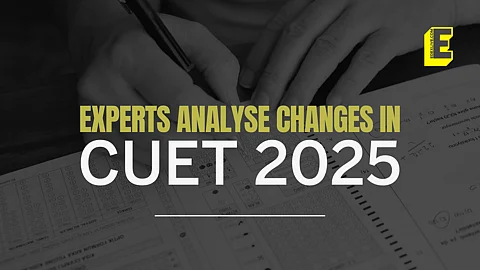

Since its introduction in 2022, the Common University Entrance Test (CUET) has faced a range of challenges and, ultimately, has met with several changes along the way. From issues related to multiple exam shifts and the complexities of result normalisation to technical glitches and logistical hurdles, the early years of CUET have been difficult for both test-takers and the exam conducting body.
Now, the University Grants Commission (UGC) has announced another major set of proposed changes to the exam pattern ahead of CUET 2025. These proposed changes include a complete transition to computer-based testing (CBT), a uniform exam duration for all subjects, a greater emphasis on aptitude testing, and other adjustments aimed at improving the exam experience.
The UGC is set to release a draft proposal outlining these revised guidelines for both CUET-UG (Undergraduate) and CUET-PG (Postgraduate) exams in 2025. As part of the process, the commission is inviting feedback and suggestions from various stakeholders, including students, parents, teachers, and academic institutions.
Experts and CUET educators who EdexLive consulted believe these changes will help make the exam process more streamlined and fair.
Let’s take a closer look at what these proposed changes entail and how they might impact the CUET exams moving forward.
A shift to CBT mode
After the hybrid model, which was introduced last year in 2024, faced significant criticism, the CUET exam is likely to return to complete CBT mode this time.
Experts expressed that a shift to digital mode would minimise irregularities and malpractices in the exam, and would also avoid logistical challenges.
Ritesh Jain, Chief Mentor at AaptPrep CUET coaching, said, “The proposed changes are certainly appreciated. Last year, students faced numerous challenges due to the hybrid mode of testing. In Delhi, for instance, exams were cancelled and rescheduled, causing significant delays. Returning to the CBT format will undoubtedly offer a more reliable experience for students.”
Computer-based testing also helps mitigate issues like paper leaks and exam malpractices — concerns that became significant challenges for national-level exams this year, added mentors.
“Last year, CUET included 63 subjects. With such a large and complex exam, having 63 different test booklets increases the likelihood of leakage. Given the scale of CUET, computer-based testing is undoubtedly the best method,” said Dr Surabhi Modi Sahai, CEO and Managing Director of CUET Possible.
More focus on aptitude testing
Another major change ahead of the CUET 2025 exam is a significant reduction in the number of subjects. According to UGC Chairman Mamidala Jagadesh Kumar, the number of subjects will be cut from 63 to 37, and the admissions for programmes in the dropped subjects will be based on the General Aptitude Test (GAT) scores.
Dr Sahai noted that this change was anticipated, given the increasing focus on aptitude testing in CUET.
“We anticipated that CUET would eventually evolve into an aptitude-based test, and this shift will continue to streamline in the coming year. This is great news for students, as it will make the exam easier to navigate and free from glitches. A limited syllabus is ideal for a national-level entrance test like CUET,” she told EdexLive.
Now, with these changes, there is expected to be a shift towards the General Aptitude Test or GAT. Varun Goel, Faculty at PhysicsWallah expressed that this year, the General Aptitude paper might become a “game-changer”.
“Last year, out of over 11 lakh candidates who appeared for CUET, around seven lakh had appeared for the General test. This trend is expected to change, as GAT will become mandatory for most subjects. This will significantly affect the cut-offs and ranklings as well,” said Goel.
Mentors have advised students to begin their CUET preparation with a heightened focus on the GAT paper, as it may prove challenging. This is especially true since aptitude-based learning is not part of the regular school syllabus.
Uniform duration, no optional questions
In CUET 2025, the students will see a standardised duration of 60 minutes for all subjects, a shift from previous sessions where some papers allowed only 45 minutes. Mentors have praised this change, noting that it will reduce confusion and give students enough time to thoroughly attempt each paper.
Additionally, the UGC has made it mandatory for students to attempt all questions, removing the option to skip questions starting in 2025. This change is expected to impact preparation strategies.
As mentor Varun Goel explained, "Previously, students could choose to attempt 40 out of 50 questions in language and domain papers, and 50 out of 60 questions in the GAT. With the removal of optional questions, students will now need to cover the entire syllabus in their preparation. They must study every topic thoroughly, without skipping any key areas."
Flexibility in choosing subjects?
Another change that the UGC chairman announced is that the students can choose any subject for the exam, even if they did not pursue it in Class XII.
While this change surely offers more flexibility to students, the impact will also depend on the eligibility criteria set by individual universities. Experts noted that it remains to be seen how this change will be implemented once central universities release their admission brochures for the upcoming academic year.
